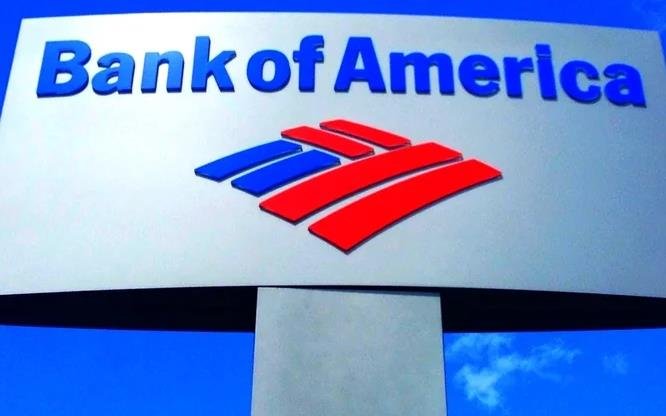The US economy is recovering from the pandemic-induced recession, with GDP growth expected to reach 6.5% in 2023, according to the Federal Reserve. However, the stock market performance of America’s banks does not reflect this optimism. Bank stocks have been under pressure from bond rating agency downgrades, rising interest rates, and real estate concerns. A brief rally in May faded, but was it the better signal?
Bond rating agencies warn of risks
One of the main factors that dragged down bank stocks in August was the negative outlook from bond rating agencies, such as Moody’s Investors Service, Standard & Poor’s, and Fitch Ratings. These agencies issued warnings and downgrades for some of America’s biggest banks, citing the risks of higher interest rates, lower net interest margins, and deteriorating asset quality.

Moody’s pointed to Federal Reserve surveys of bank lending officers that, to it, look like pre-recession measures in 2000 and 2007. The agency said that banks have loosened their underwriting standards and increased their exposure to riskier segments, such as commercial real estate and leveraged loans. Moody’s also noted that banks have reduced their loan loss reserves, which could leave them vulnerable to unexpected shocks.
S&P and Fitch echoed similar concerns, saying that banks face headwinds from rising credit costs, lower fee income, and regulatory uncertainty. S&P downgraded the ratings of Bank of America, Citigroup, JPMorgan Chase, and Wells Fargo, while Fitch lowered its outlook for Bank of America, Fifth Third Bancorp, PNC Financial Services Group, and US Bancorp.
Interest rates pose a challenge
Another factor that has weighed on bank stocks is the rise in interest rates since the Fed’s first post-Covid boost to the Fed funds rate in March 2022. The Fed has raised its benchmark rate three times since then, to 0.75%, and signaled two more hikes in 2023. The yield on the 10-year Treasury note has also climbed to above 2%, from a record low of 0.5% in August 2021.
The increase in rates has had a mixed impact on banks’ profitability. On one hand, it has improved their net interest income and margins, which measure the difference between what they earn from lending and what they pay for deposits and funding. On the other hand, it has reduced the value of their bond portfolios, which are mostly composed of fixed-rate securities issued at lower rates before last year.
The higher rates have also affected the demand for loans, especially mortgages, which are sensitive to changes in borrowing costs. Mortgage originations have declined by 25% in the second quarter of 2023 compared to a year ago, according to the Mortgage Bankers Association. This has hurt banks’ fee income from selling mortgages to investors or servicing them.
Real estate remains a concern
A third factor that has dampened the outlook for bank stocks is the uncertainty surrounding the real estate market, especially office buildings. The pandemic has accelerated the trend of remote work, reducing the need for physical office space. According to a report by Goldman Sachs, the share of US workers working from home at least part of the week has stabilized at around 20-25%, below its peak of 47% in 2021 but well above the pre-pandemic 2.6%.
This has led to a decline in office occupancy and rents across major cities, such as New York, San Francisco, Chicago, and Los Angeles. According to CBRE Group, a commercial real estate services firm, the national office vacancy rate rose to 16.4% in the second quarter of 2023, the highest level since 2010. The average asking rent fell by 1.8% year-over-year, the largest drop since 2011.
These trends have raised concerns about the quality of commercial real estate loans on banks’ balance sheets. Commercial real estate loans account for about 20% of total loans at US banks, according to the Fed. While delinquencies and charge-offs on these loans have remained low so far, some analysts fear that they could spike if office demand does not recover or if interest rates rise further.
Bank stocks may rebound
Despite these challenges, some Wall Street analysts argue that bank stocks are undervalued and poised for a rebound. They point to the strong earnings results that most banks reported in the second quarter of 2023, beating analysts’ expectations by an average of 5%, according to Morgan Stanley. They also note that banks have improved their capital and liquidity positions, enabling them to increase their dividends and share buybacks.
Moreover, they contend that the risks posed by interest rates and real estate are manageable and already priced in by the market. They expect that banks will be able to adjust their balance sheets and loan portfolios to cope with higher rates and lower bond values. They also believe that office demand will eventually recover as more workers return to the workplace and as new tenants take advantage of lower rents.
In addition, they highlight the opportunities that banks have to grow their revenues and profits from other sources, such as digital banking, wealth management, investment banking, and consumer lending. They argue that banks have invested heavily in technology and innovation to enhance their customer experience and efficiency. They also point to the strong consumer spending and confidence that support the demand for credit cards, auto loans, and personal loans.
Therefore, they conclude that bank stocks are attractive at current levels and offer a favorable risk-reward ratio. They expect that bank stocks will outperform the broader market in the coming months, as the economy continues to recover and as the Fed remains supportive of the financial sector.
